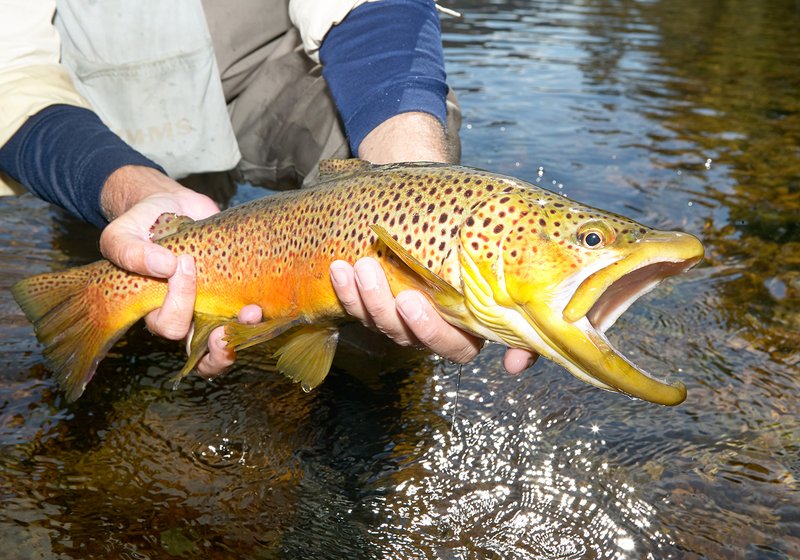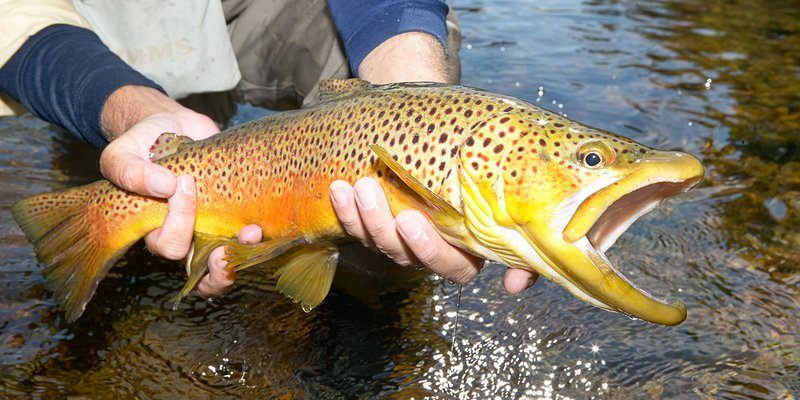
Trout, particularly species like the rainbow and brown trout, are found in streams, rivers, and lakes, contributing to the balance of these habitats. They don’t just hang out; they interact with other fish, plants, and even the larger animals that rely on them for food. When you think about it, these fish are like nature’s connectors, weaving a web of life that supports various species. So, what exactly is their role? Let’s explore this fascinating topic together.
Trout as a Keystone Species
You might wonder what a “keystone species” means. Simply put, it’s a species that has a disproportionately large effect on its environment compared to its abundance. Imagine a keystone in an archway; if you take it out, the whole structure collapses. Trout are considered keystone species because they help maintain the health of aquatic ecosystems in several ways.
Firstly, trout consume a variety of prey, including insects, smaller fish, and crustaceans. This feeding behavior helps regulate the populations of these organisms, preventing any one species from overwhelming the system. For example, without trout, there could be an explosion of smaller fish or insects, which could lead to overgrazing of aquatic plants. Healthy plant life is essential because it provides oxygen and habitat for numerous aquatic creatures.
Secondly, trout are a food source for larger predators, such as birds of prey and mammals like otters. Their presence supports the entire food chain, illustrating how interconnected these ecosystems are. Essentially, when trout thrive, they promote biodiversity, which is crucial for resilient ecosystems.
Trout and Water Quality
Here’s the thing: trout are pretty picky about their homes. They thrive in clean, well-oxygenated waters. This preference makes them excellent indicators of water quality. Essentially, if you see trout in a river or lake, it generally means the water is healthy.
Trout help improve water quality in several ways. Their feeding habits contribute to nutrient cycling within the ecosystem. When trout feed on insects and other organisms, they help break down organic matter, returning nutrients to the water. This process encourages the growth of aquatic plants, which in turn produce oxygen—making the water even better for other fish and wildlife.
Moreover, trout often require cool water temperatures and specific habitat features, like shaded areas or clean gravel beds for spawning. When their populations are threatened due to pollution or habitat loss, it’s a red flag that something is wrong in the ecosystem. Monitoring trout populations can therefore provide valuable insights into the overall health of aquatic environments.
Trout’s Influence on Aquatic Biodiversity
Trout don’t just exist in a vacuum; they interact with a plethora of other species. By feeding on various organisms, they help control the populations of those species, fostering a balanced ecosystem. You might be thinking, “How does that even work?” Well, here’s how.
When trout feed on smaller fish or insects, they can prevent any one type from becoming too dominant. For example, if a certain type of insect were to proliferate unchecked, they could overconsume the aquatic vegetation. Healthy plant life is crucial as it provides shelter and breeding grounds for many species, including young fish. Therefore, by regulating prey populations, trout help maintain the diversity of life in their habitat.
Additionally, trout can have direct effects on the populations of other fish species. In some cases, they compete with smaller fish for food, or they might even prey on them. This interaction can help balance fish communities, ensuring that the environment can support various life forms instead of favoring one over the others.
Trout in the Food Web
Trout are integral players in the aquatic food web. Think of it as a complex game of chess where every piece interacts with one another. In this game, trout occupy a middle position. They eat smaller organisms, while also being eaten by larger predators. This balance helps keep the entire system functioning smoothly.
The unique position of trout in the food web allows them to be both predators and prey. Their role as predators helps control the populations of species below them, while their availability as prey supports species higher up the food chain. This balance is crucial for maintaining overall ecosystem health.
Moreover, trout contribute to nutrient cycling. When they consume prey and later excrete waste, they release nutrients back into the water. This nutrient recycling is vital for plant growth and sustains the health of the aquatic system, making it a rich habitat for all types of life.
Threats to Trout Populations
Despite their crucial role, trout face numerous threats that can impact their populations and, consequently, marine ecosystems. Climate change is a significant concern, as rising temperatures can lead to warmer waters that are unsuitable for trout. Since these fish need cool, oxygen-rich waters, any change in temperature can affect their survival.
Pollution is another big player. Agricultural runoff, industrial waste, and urban development can all harm water quality. When pollutants enter the water, they can disrupt the delicate balance of ecosystems. Imagine trying to thrive in a toxic environment; it’s just not feasible for trout or any other aquatic organisms.
Habitat loss due to damming rivers or degradation of natural spaces can further endanger trout populations. Without suitable areas for breeding and feeding, trout numbers can dwindle, leading to a ripple effect throughout the ecosystem. It’s a delicate dance, and when one partner falters, the entire routine can fall apart.
The Importance of Trout Conservation
With all these threats looming, what can be done to protect our trout and, by extension, our aquatic ecosystems? Conservation efforts are critical. Understanding the role of trout in marine ecosystems is the first step towards ensuring their survival.
First, supporting clean water initiatives can help keep habitats healthy. Policies that reduce pollution and promote sustainable agriculture are essential. Additionally, protecting natural waterways and restoring damaged habitats can create safe spaces for trout to thrive again.
Promoting responsible fishing practices is equally important. Regulation of fishing seasons and limits can prevent overfishing, allowing trout populations to recover and maintain healthy numbers. Educating local communities about the value of trout can foster a sense of stewardship, encouraging everyone to contribute to conservation efforts.
In summary, protecting trout is not just about saving a fish; it’s about preserving the entire ecosystem they help uphold.
Trout play a vital role in marine ecosystems, acting as connectors and indicators of health within their environments. From their role as keystone species to their influence on water quality and biodiversity, these fish are fundamental to the balance of aquatic life.
As we face growing environmental challenges, understanding the importance of trout becomes even more critical. By prioritizing conservation efforts and supporting clean water initiatives, we can help ensure that these beautiful fish—and the ecosystems they inhabit—thrive for generations to come. With every little action, we can create a ripple effect that leads to a healthier environment, showcasing just how interconnected all life truly is.

